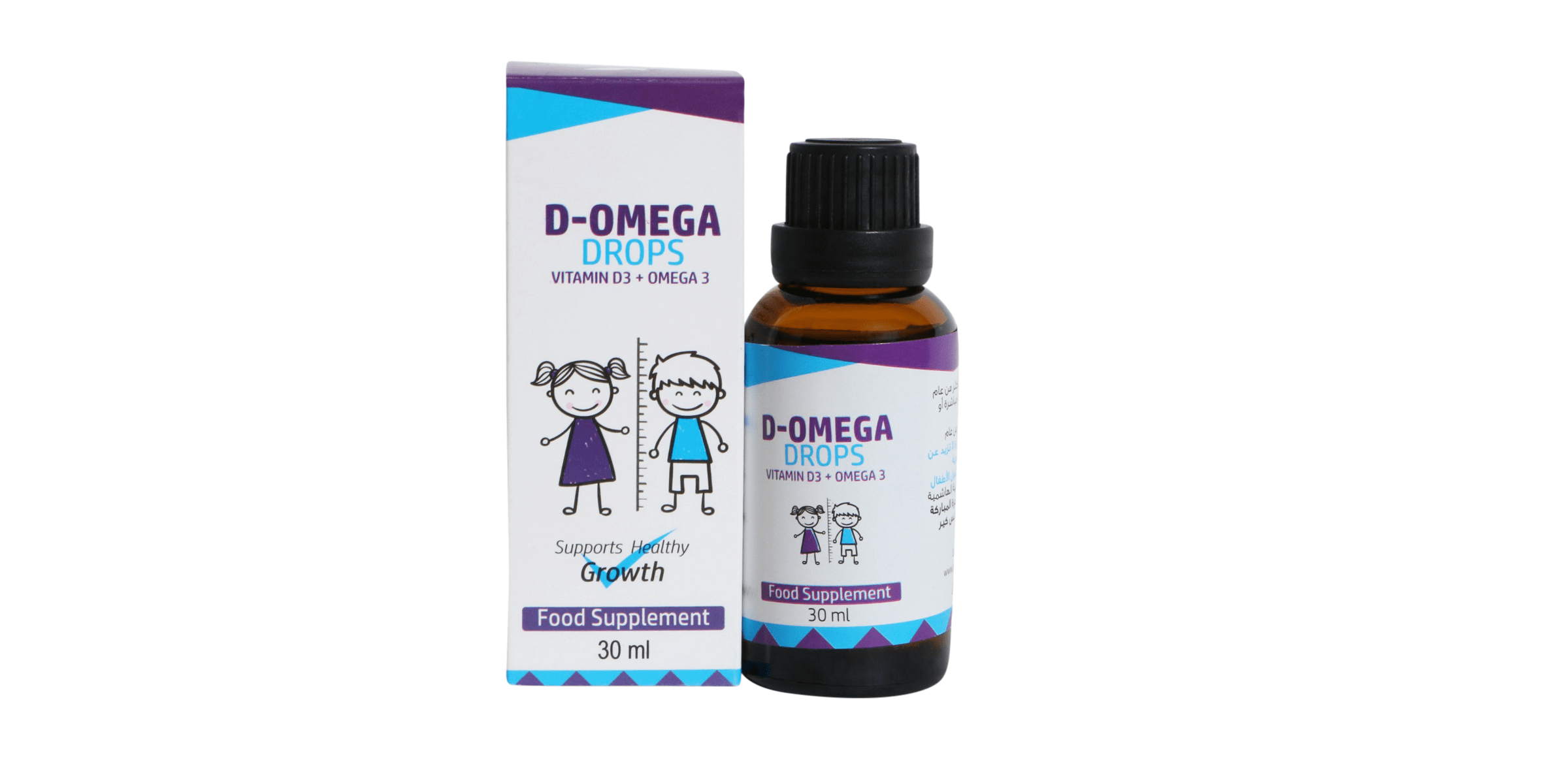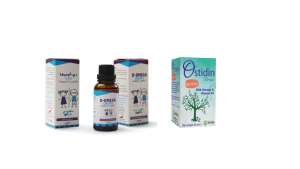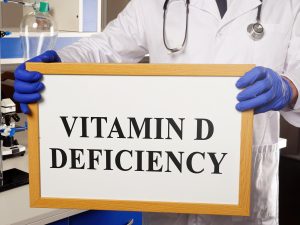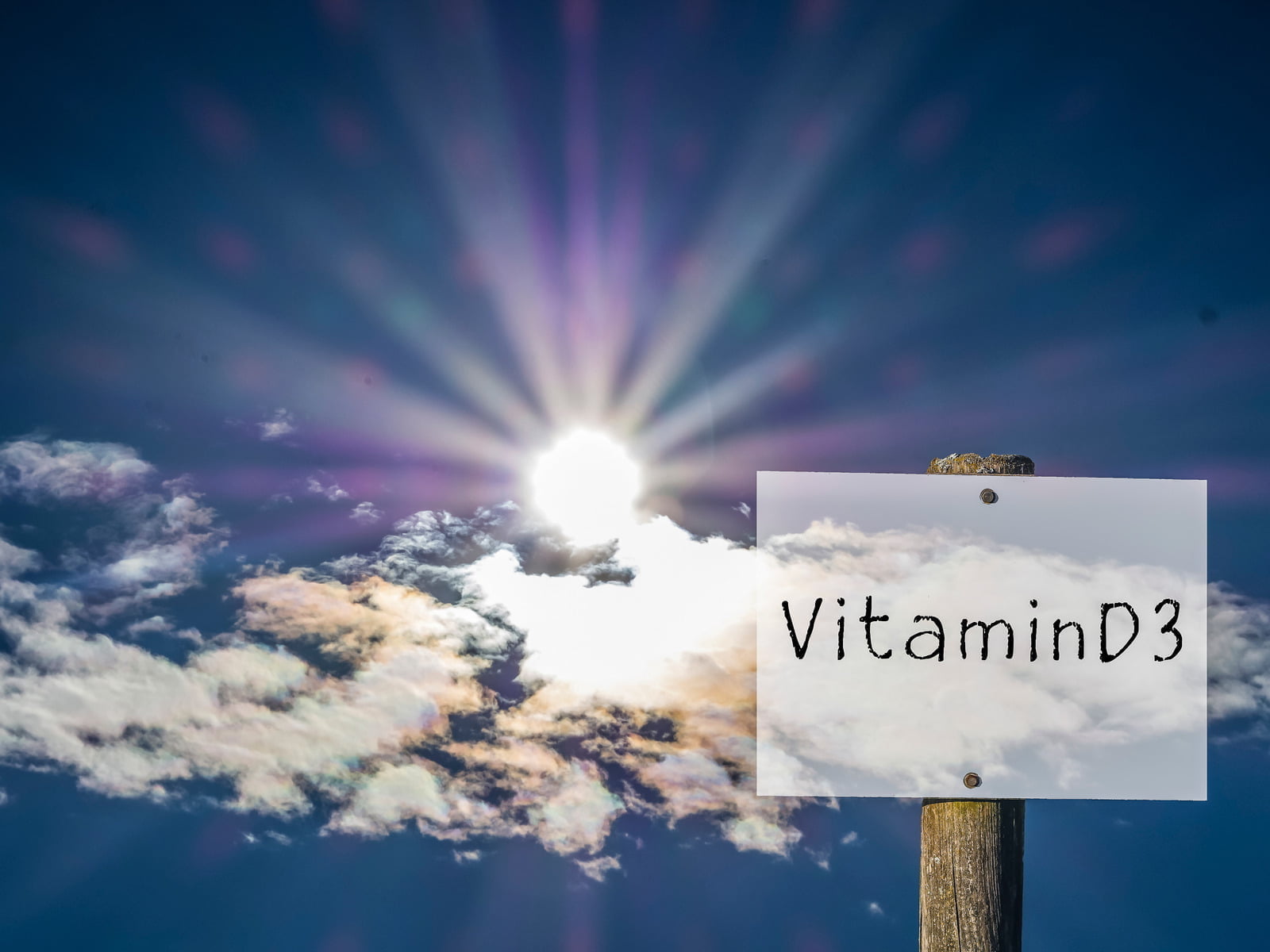What age is suitable for D-Omega Drops?
D-Omega Drops is primarily designed to cater to the nutritional needs of young children, specifically those aged 1 to 10. During this critical period of rapid growth and development, children require adequate nutrients, including Vitamin D3 and Omega-3 fatty acids, which are contained in our D-Omega Drops.
The dosages are specifically formulated to match the recommended dietary allowances for these age groups. Vitamin D3 aids calcium absorption and promotes bone growth, while the Omega-3 fatty acids are essential for brain development.
Children older than ten may still take D-Omega drops in higher dosages, such as 20 drops three times daily.
How are D-Omega Drops administered?
D-Omega Drops are specially designed for easy administration to children. The formulation includes natural citrus flavors like orange and lemon, which appeal to children. This means that despite containing omega-3 fatty acids from fish oil and Vitamin D, there’s no ‘fishy’ taste commonly associated with fish oil supplements.
Here’s a step-by-step guide on administering D-Omega Drops:
- Shake the bottle well before use to ensure the active ingredients are well mixed.
- Use the dropper provided to measure the recommended dosage.
- The drops can be administered directly into the child’s mouth. If your child hesitates, you can mix the drops into a small amount of food or drink. The citrus flavor blends well with many foods and drinks, making it easy to incorporate into your child’s meals. Ensure the entire dosage is consumed.
- Monitor the administration to ensure consistent daily intake.
How many drops should be given daily?
D-Omega Drops are carefully formulated to meet the needs of your growing child. We recommend a specific dosage pattern based on the child’s age to ensure they receive optimal essential nutrients.
The suggested dosage for toddlers aged 1 to 2 is 20 drops of D-Omega Drops once daily. This dosage caters to their developmental needs while ensuring easy digestion and absorption.
As children grow, their nutritional needs change. Therefore, we recommend adjusting the dosage to 20 drops twice daily for children ages 2 to 10. This will give them the increased nutrients necessary for their growth and development during these critical years.
Due to rapid growth and developmental changes, children aged ten and above have even greater nutritional needs. At this stage, we advise administering 20 drops three times daily. This increased dosage ensures they receive the essential nutrients for optimal health and well-being.
These dosage recommendations ensure that each age group receives the necessary nutrients in a quantity that is easy to digest and absorb.
What are the benefits of D-Omega Drops?
D-Omega Drops are meticulously crafted to benefit children at various stages of their development. Infused with the power of two vital nutrients – Vitamin D3 and Omega-3 fatty acids – these drops offer a convenient and effective way to supplement your child’s diet.
Bone Health: Vitamin D3 is essential for absorbing calcium and phosphate in the body, which are crucial for developing and maintaining strong, healthy bones and teeth. Regular intake of D-Omega Drops can help prevent conditions such as rickets, a disease characterized by bone weakness.
Brain Development: Omega-3 fatty acids are critical contributors to brain health and are vital to cognitive function and behavioral development. They are crucial for neural development and can aid in improving memory and focus in children.
Eye Health: The Omega-3 fatty acid DHA helps develop the eye’s retina, promoting better vision and overall eye health.
Immune Support: Vitamin D3 also supports immune system function, helping to protect your child from various illnesses and infections.
Heart Health: Omega-3 fatty acids support heart health, potentially reducing future cardiovascular issues.
Mood Enhancement: Some studies(1,2,3,4) have suggested that Omega-3 may help manage mood and behavior, potentially reducing symptoms of ADHD.
Can D-Omega Drops replace a healthy diet?
While D-Omega Drops provide essential nutrients like Vitamin D3 and Omega-3 fatty acids, it’s important to understand that they are not designed to replace a healthy diet.
D-Omega Drops are a supplement, meaning they are intended to supplement—not replace—the nutrients children get from a balanced, varied diet. Healthy eating provides a wide range of nutrients that children’s bodies need for growth, energy, and overall health, which a single supplement cannot fully replace.
D-Omega Drops are specifically formulated to provide essential nutrients like Vitamin D3 and Omega-3 fatty acids, critical for a child’s growth and development. Getting sufficient nutrients from diet alone can be challenging, especially for picky eaters or those with specific dietary restrictions. However, these drops should be used as part of a balanced diet rich in fruits, vegetables, lean proteins, and whole grains, not as a substitute for such a diet.
Supplements like D-Omega Drops can help fill nutritional gaps and ensure your child gets the necessary levels of specific nutrients. But remember, they work best with a varied, nutrient-rich diet, regular physical activity, and an overall healthy lifestyle.
Are there any side effects of D-Omega Drops?
D-Omega Drops are generally safe when used as directed. They provide essential nutrients—vitamin D3 and Omega-3 fatty acids—crucial for children’s development and health.
Like all supplements, D-Omega Drops have the potential for side effects, but these are generally mild and rare when the product is used as directed. Potential side effects could include mild gastrointestinal upset such as nausea, bloating, or diarrhea. These effects are typically transient and resolve on their own.
Lastly, while D-Omega Drops are formulated with a natural citrus flavor to be palatable to children, some children may not like the taste. This is not a side effect, per se, but something to remember.
Where are D-Omega Drops sourced from?
D-Omega Drops are created with a commitment to quality and purity. The Omega-3 fatty acids in our formulation are sourced from the pristine waters of Iceland, which is known for its sustainable fish populations. Icelandic fish oil is highly valued for its purity and concentration of essential fatty acids, making it an excellent source of Omega-3.
Our Vitamin D3, known as cholecalciferol, is also sourced carefully and responsibly to ensure its quality and efficacy.
We ensure that each D-Omega Drops undergoes rigorous testing for potency, purity, and quality in our production process. This ensures that we deliver a product that meets and exceeds industry standards and provides the optimal levels of Vitamin D3 and Omega-3 for your child’s development and health.
Are D-Omega Drops suitable for children with allergies?
D-Omega Drops are meticulously designed to accommodate children with different dietary needs and allergies. They are gluten-free, dairy-free, and nut-free, making them an excellent choice for children with these common food sensitivities.
Additionally, it’s worth noting that our Omega-3 fatty acids are derived from fish oil. However, the process we employ to extract these oils removes nearly all the protein that could trigger fish allergies. This makes D-Omega Drops a safe supplement option even for children allergic to fish.
In addition, Vitamin D3 included in our D-Omega Drops is known for its high tolerance and low incidence of allergic reactions.
What does D-Omega Drops taste like?
D-Omega Drops have been specially formulated to appeal to children’s taste buds. One challenge when giving supplements to children can be their selective palate. With this in mind, we’ve ensured that D-Omega Drops carry a pleasant natural citrus flavor reminiscent of oranges and lemons.
Unlike many other omega-3 supplements, D-Omega Drops do not have a fishy taste or smell. Instead, children enjoy a fruity, familiar flavor, making taking their daily supplement easy and enjoyable. We aim to ensure that maintaining good health isn’t a battle and can be a pleasant part of your child’s daily routine.
Where can I buy D-Omega Drops?
D-Omega Drops can be conveniently purchased through a variety of channels.
D-Omega Drops can be found in numerous physical health stores and pharmacies throughout Jordan and Libya. Our products are stocked in locations that prioritize health and wellness, ensuring that you can find our products while you shop for your other healthcare needs.
In the countries where it is unavailable, you can order it online.
Can D-Omega Drops be taken with other medications?
D-Omega Drops are generally considered safe to be administered alongside most other medications. However, like any dietary supplement, they can interact with certain medications. It’s essential to be cautious if the child is on any medication that affects blood clotting, as Omega-3 fatty acids can thin the blood. Similarly, Vitamin D has potential interactions with certain medications like steroids or weight-loss drugs. As a precaution, discussing with your child’s pediatrician or a healthcare professional is always advisable before starting any new dietary supplement alongside prescribed medications. This way, you can ensure that the supplement doesn’t interfere with the effectiveness of the medications or cause unwanted side effects.
What is the shelf life of D-Omega Drops?
D-Omega Drops have a shelf life of three years from the production date. This lengthy shelf life ensures your child can use the product significantly while benefiting from its high potency and effectiveness. To ensure the product remains in the best condition, it should be stored in a cool, dry place away from direct sunlight. Once opened, use the product within 60 days to guarantee its freshness and efficacy. Remember, you should always check the expiration date on the packaging before administering any dietary supplement to ensure it’s safe for consumption.
What should I do if my child misses a dose?
If your child misses a dose of D-Omega Drops, don’t panic. It’s important not to give a double dose to compensate for the missed one. Give your child the regular dosage at the next scheduled time. D-Omega Drops is a supplement; missing one or even a few doses isn’t usually a concern. However, establishing a routine can help ensure your child gets the full benefits of the Omega-3 and Vitamin D3 supplementation. If you frequently forget doses, try setting reminders on your phone or incorporating the supplementation into a daily routine like breakfast to help you remember.
Can adults use D-Omega Drops?
Yes, D-Omega Drops can be used by adults as well. The product’s Vitamin D3 and Omega-3 fatty acids benefit people of all ages. However, because D-Omega Drops are specially formulated to meet the nutritional needs of children, adults may need a higher dosage to achieve the desired effects. Adults can take 20 drops three or four times a day.
Is there a specific time of day to give D-Omega Drops?
D-Omega Drops can be given at any time of the day at your child’s convenience. However, it can be helpful to establish a routine for administering the drops to ensure regular and consistent intake. Some parents find it easiest to give the drops during meal times, as they can be mixed with food or drink, which may make it more palatable and easy for the child to consume. Follow the recommended dosage and do not exceed it. If your child takes other dietary supplements or medications, consult a healthcare provider to determine the best time to administer D-Omega Drops.
How should D-Omega Drops be stored?
D-Omega Drops should be stored in a cool, dry place, away from direct sunlight and heat, to maintain its effectiveness and quality. To prevent contamination, the bottle should be tightly closed when not used. Avoid storing the product in areas with high humidity, such as the bathroom or near the kitchen sink. Also, it’s essential to keep D-Omega Drops out of reach of children to avoid accidental consumption. It is unnecessary to refrigerate D-Omega Drops; however, if you choose to do so, ensure the lid is tightly sealed to avoid moisture entering the bottle. Always check the expiry date on the bottle before use, and do not use the product if it has passed its shelf life.
What should I do if my child doesn’t like the taste of D-Omega Drops?
D-Omega Drops have been formulated with a natural citrus flavor to make them more palatable for children. However, if your child still doesn’t enjoy the taste, you can make it more appealing in several ways. You can mix the drops with a small amount of their favorite juice or food, which can help mask the taste. You can also try giving the drops during meal times, as the other flavors might help make the taste less noticeable. Remember, the key is to ensure that your child consumes the drops, so finding a method that works best for your child can make this daily routine smoother and more enjoyable for both of you.
Can I give D-Omega Drops to my child if they are unwell?
Yes, it’s generally safe to continue giving D-Omega Drops to your child even when they’re unwell. Nutrients like Omega-3 and Vitamin D3 may support the body’s immune response. However, it’s important to note that D-Omega Drops are not a medication and should not be used as a substitute for any prescribed medication or treatment. If your child is seriously unwell, has a persistent illness, or is on medication, it’s always best to consult your child’s healthcare provider before changing their diet or supplement regimen. They can provide personalized advice based on your child’s health condition and needs.
What should I do if my child accidentally takes more than the recommended dose?
If your child accidentally consumes more than the recommended dose of D-Omega Drops, do not panic. While exceeding the suggested dosage is not ideal, occasional intake of an extra dose usually doesn’t cause serious harm. However, persistently high doses of vitamin D or Omega-3 over time could lead to unwanted side effects, so regular supervision is advised.
If your child has consumed a significantly higher dose than recommended, monitor them for adverse reactions, such as nausea, diarrhea, or other digestive discomfort. In case of severe reactions, seek immediate medical attention.
For future use, store the D-Omega Drops in a safe, out-of-reach place and supervise your child while administering the supplement. This will help prevent accidental overconsumption.
Is D-Omega Drops suitable for vegetarian or vegan diets?
D-Omega Drops primarily comprises two main ingredients: Vitamin D3 (Cholecalciferol) and Omega-3 fatty acids. The source of these ingredients is essential when considering suitability for vegetarian or vegan diets.
Vitamin D3 in our product is sourced from lanolin, a substance derived from sheep’s wool, without harming the animal. However, it’s essential to note that while this might be acceptable for some vegetarians, it may not be for vegans as it involves an animal source.
The Omega-3 fatty acids in D-Omega Drops are derived from fish oil, which makes them unsuitable for vegans and vegetarians who avoid fish.
In summary, D-Omega Drops may not be suitable for individuals following strict vegetarian or vegan diets due to the animal origins of its ingredients. We recommend those following such diets seek alternatives that align with their dietary restrictions and lifestyle choices.
Do D-Omega Drops contain any artificial flavors or colors?
D-Omega Drops are formulated to provide essential nutrients like Vitamin D3 and Omega-3 fatty acids in an easily consumable and enjoyable format for children. Natural flavors are incorporated to make the supplement palatable.
It does not contain artificial flavors or colors, as we commit to quality and purity and focus on keeping our products as clean and natural as possible. This involves avoiding unnecessary additives, including artificial flavors and colors.
Overall, D-Omega Drops is designed to deliver essential nutrients to children in a format that is enjoyable, easy to consume, and free from unnecessary additives. This aligns with the principle of prioritizing children’s health and well-being.
How long does it take to see benefits after starting D-Omega Drops?
D-Omega Drops, formulated with Omega-3 fatty acids and Vitamin D3, is designed to support overall health and development in children. The duration for noticeable improvements varies as it’s influenced by various factors such as the child’s nutrient levels, overall health status, dietary habits, and individual metabolic rate.
For instance, if a child has been deficient in Vitamin D or Omega-3s, improvements may be noticed sooner as the body begins to receive these essential nutrients. The benefits could manifest in several ways, such as enhanced mood, better focus, or stronger immunity. Similarly, regular intake of Omega-3 could lead to improvements in cognitive development or visual acuity over time.
However, it’s important to remember that D-Omega Drops, like any supplement, are not an instant solution but part of a long-term approach to maintaining health. Regular and consistent usage at the recommended dosage is crucial for the best results.
Generally, observing changes might take a few weeks to a couple of months, but this should not discourage consistent usage. If you have specific concerns or if your child has unique healthcare needs, it’s best to consult with a healthcare provider or a pediatrician.
What quality controls are in place for the production of D-Omega Drops?
D-Omega Drops are produced under strict quality control measures to ensure the highest safety and efficacy standards. We start by sourcing our ingredients, ensuring they are of the highest quality, and processing them in a manner that retains their nutritional value.
Our Omega-3 is sourced from wild-caught fish, and our Vitamin D3 is from a trusted supplier. Once we have the raw materials, they are tested to meet our purity, potency, and safety specifications.
The production process is carried out in facilities that comply with Good Manufacturing Practices (GMP). This system ensures that products are consistently produced and controlled according to quality standards. It covers all aspects of production, from the starting materials, premises, and equipment to the training and personal hygiene of staff.
Our D-Omega Drops are tested at multiple stages during production for quality and consistency. We use advanced analytical methods to confirm the ingredients’ identity, strength, and purity.
Finally, the finished product undergoes final testing before it is packaged and distributed. We test for aspects such as Omega-3 and Vitamin D3 concentration, the absence of contaminants, and compliance with label claims.
This rigorous process ensures that every bottle of D-Omega Drops meets our high standards for quality and delivers what it promises – a safe and effective supplement to support the health and development of your child.
Is there any risk of Vitamin D toxicity with D-Omega Drops?
Vitamin D toxicity, also known as hypervitaminosis D, is rare but can occur if your child takes extremely high doses of Vitamin D over a prolonged period. However, it’s important to note that Vitamin D in D-Omega Drops is well within children’s safe and recommended limits.
According to the Institute of Medicine (IOM) guidelines, each serving of D-Omega Drops contains 400 International Units (IU) of Vitamin D3, which is within the Recommended Dietary Allowance (RDA) for children aged 1-13.
Furthermore, the safety of D-Omega Drops is further enhanced by their design to be taken in divided doses throughout the day. This allows for better absorption and reduces the risk of potential adverse effects.
Please adhere to the recommended dosage and do not exceed it unless directed by a healthcare provider. If your child is taking other supplements or medications that contain Vitamin D, consider the total amount of Vitamin D they’re getting from all sources to avoid exceeding the safe upper intake levels.
How should I dispose of expired D-Omega Drops?
You can dispose of expired D-Omega Drops in your household trash. To dispose of your household trash, you may want to mix the product with an unappealing substance, such as dirt or used coffee grounds, and then place it in a sealed bag to prevent children or pets from accidentally ingesting it.
Can pregnant or breastfeeding mothers take D-Omega Drops?
D-Omega Drops are primarily formulated for children, focusing on the nutrient requirements for their growth and development. However, Vitamin D and Omega-3 fatty acids are essential for pregnant and breastfeeding women as they contribute to the baby’s development.
Vitamin D is crucial for bone health and immune function, while Omega-3 fatty acids, especially DHA, play a significant role in developing the baby’s brain and eyes.
The specific dosing and nutrient requirements for pregnant or breastfeeding women can differ from those for children.
Are there any medical conditions that could affect how my child absorbs and uses D-Omega Drops?
Some medical conditions, such as those found in D-Omega Drops, can impact how the body absorbs and utilizes nutrients. These conditions primarily involve the digestive system, which is responsible for nutrient absorption.
For example, disorders that impact the gastrointestinal tract’s ability to digest and absorb nutrients can influence how effectively a child benefits from D-Omega Drops. Such conditions include Celiac disease, Crohn’s disease, and cystic fibrosis, which are associated with malabsorption.
Is it safe to use D-Omega Drops if my child has a fish or shellfish allergy?
The Omega-3 fatty acids in D-Omega Drops are sourced from fish oil. However, proteins in the fish typically cause fish allergies, and the oil used in our product undergoes a rigorous purification process that removes nearly all of these proteins. Thus, the likelihood of an allergic reaction from fish proteins in D-Omega Drops is very low.
However, everyone’s immune system reacts differently, and in very rare cases, some individuals may still react to trace amounts of proteins. Therefore, if your child has a known severe fish or shellfish allergy, we strongly recommend consulting your child’s doctor before introducing D-Omega Drops to their dietary regimen.
D-Omega Drops does not contain any shellfish or shellfish products. The Omega-3 fatty acids are purely sourced from fish, not shellfish.
What should I do if the D-Omega Drops bottle is damaged or the seal is broken when I receive it?
Do not use the product if you receive a damaged bottle or a broken seal. The broken seal could indicate possible contamination or that the product has been tampered with, while a damaged bottle may compromise the quality of the D-Omega Drops.
Immediately contact the pharmacy where you purchased the product and ask for a replacement. Provide them with detailed information about the issue, including where and when you purchased the product, and they will be happy to assist you.
References:
- A study published in the Journal of the American Academy of Child & Adolescent Psychiatry, “Omega-3 Fatty Acid Treatment of Children With Attention-Deficit Hyperactivity Disorder: A Randomized, Double-Blind, Placebo-Controlled Study,” found that Omega-3 supplementation could improve the attention and behavior of children with ADHD.
- A meta-analysis of studies published in Translational Psychiatry found that Omega-3 supplementation had a moderate effect on ADHD symptoms, stating that “Omega-3 fatty acids supplementation is an effective treatment for children with ADHD.”
- Other research, such as that published in the Journal of Clinical Psychiatry, suggests a possible role of Omega-3s in depressive disorders. Their study, “Meta-Analysis of the Effects of Eicosapentaenoic Acid (EPA) in Clinical Trials in Depression,” found a significant clinical benefit of Omega-3 supplementation in patients with depression.
- A European Journal of Clinical Nutrition study found that children who consumed higher amounts of omega-3 fatty acids performed better on tests related to behavior and learning.





